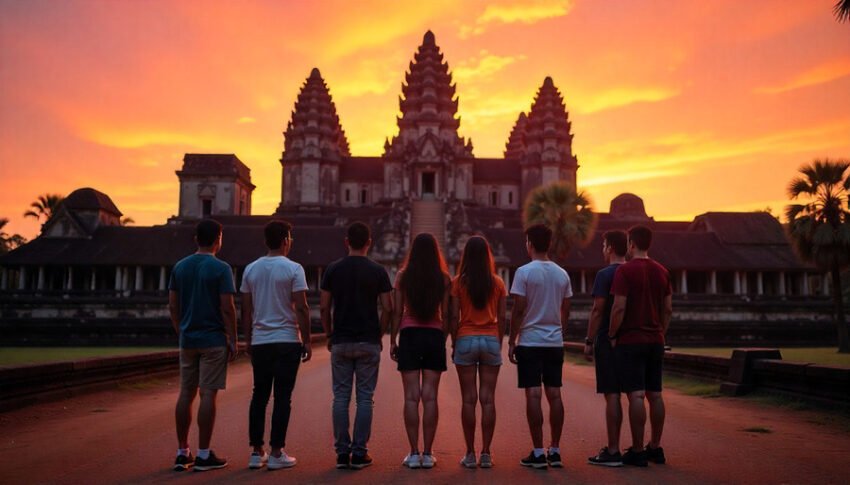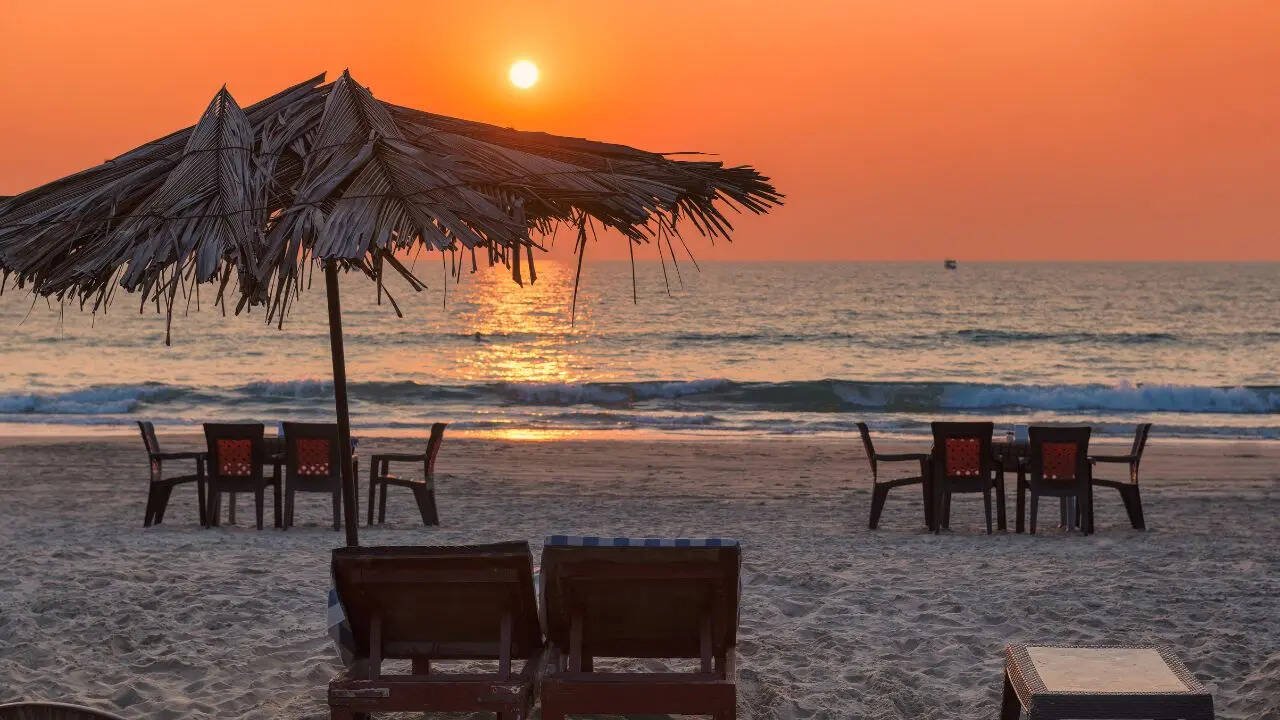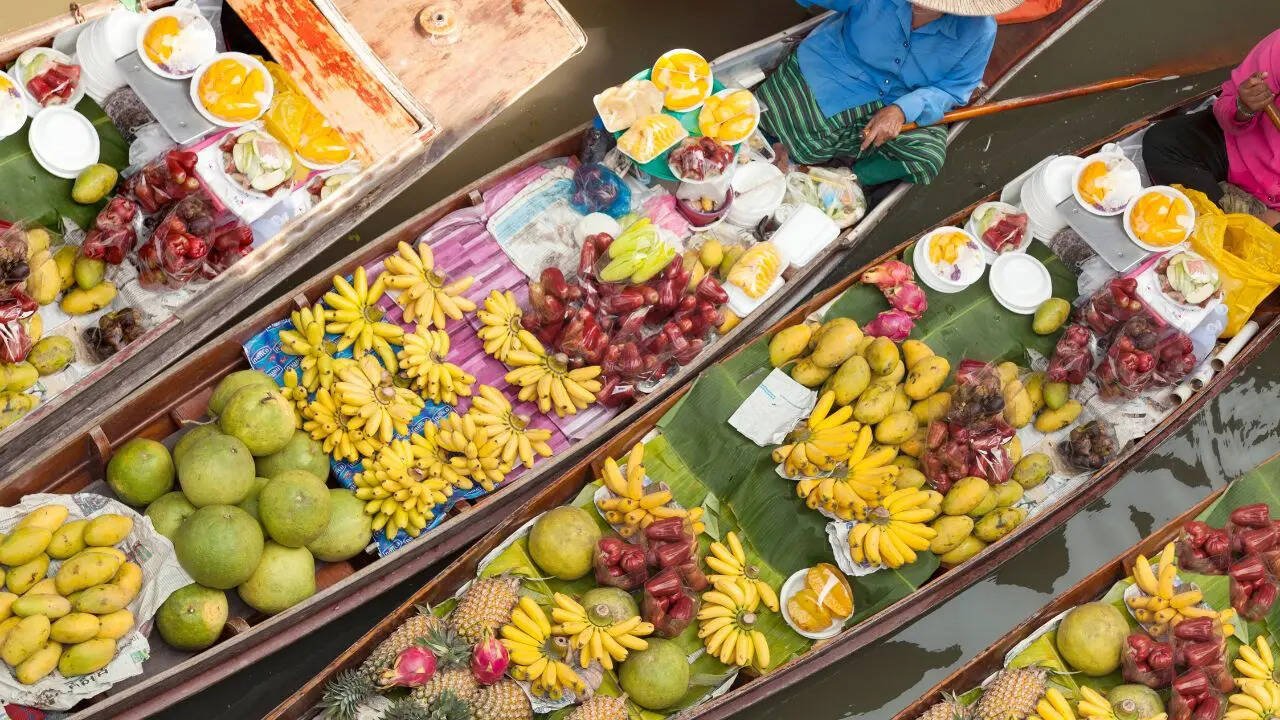Travel Trends
Thailand Adjusts to Evolving Chinese Tourism Trends with Focus on Sustainable Travel and Premium Experiences Amid Economic Uncertainty

Wednesday, August 6, 2025
With the trend in Chinese tourism continuing to evolve, as a result of China’s shrinking export-driven economy and affluent middle-class choosing quality over quantity, Thailand is strategically repositioning itself around sustainable travel and premium experiences. The trend toward digital-first, independent travelers and visitor declines in traditional group markets are expected to be a permanent feature even as the number of Chinese visitors gradually recovers. And Thai tourism organizations are adapting by catering to the burgeoning demand for high-end, environmentally conscious travel — as Chinese tourists become more sophisticated about sustainability-handling destinations.
China is morphing into a new breed of economy, and although much of its changes have already happened within its own market, the results are also being felt across global economies, especially in tourism-hungry nations like Thailand. While optimistic official figures mask the overall situation, a closer look at the headlines shows a complex reality behind the much-hyped China story now entering this new phase of transition for the world’s second largest economy. China is facing internal struggles, including empty shopping malls, high graduate unemployment, and a vulnerable property market, which could significantly impact the future of its extensive outbound tourism industry. In this article, we will delve into these shifts and provide detailed research on how they will affect the overall outlook for Chinese tourism to Thailand in the short-term 2022–2024 as well as mid to long-term during 2025–2028.
China’s Economic Transformation: A Complex Reality
For years, China’s robust economic growth has been a driving force in global markets, including the tourism sector. The Chinese outbound tourism market has long been one of the most lucrative for countries like Thailand, where Chinese visitors have contributed significantly to the local economy. In contrast, the situation on the ground presents a much more complex picture.Despite these challenges, China’s economy is not in freefall. While official GDP figures may reflect a 5.2% growth, which is still above many developed nations, underlying factors suggest a more complicated economic environment.
- Weak Consumer Confidence: Many Chinese consumers are still recovering from financial stress, especially following the real estate downturn and high levels of household debt. This cautious consumer sentiment is reflected in outbound travel trends, as many Chinese families remain hesitant to spend on luxury vacations.
- Youth Unemployment: Another concerning issue is the high level of unemployment among Chinese youth, which affects their disposable income and ability to travel abroad. This demographic, which has traditionally been a significant part of outbound tourism, is likely to spend less on travel in the coming years.
- Property Market Struggles: China’s property sector is facing a significant slowdown, with property values falling and many middle-class households holding off on non-essential purchases, including international travel.
Although facing significant challenges, China’s economy is not collapsing. The 5.2% growth places China in the upper-middle range of global economies, but it is a far cry from the rapid expansion witnessed in previous decades. This economic shift has profound implications for China’s outbound tourism, and by extension, for countries like Thailand, which rely heavily on Chinese visitors.
Short-Term Outlook (2025–2026): A Slower Comeback Than Expected
For Thailand, China has long been its largest inbound tourism market, and any shifts in Chinese outbound travel patterns will have significant consequences. The short-term outlook for Chinese tourism to Thailand (2025–2026) is far less optimistic than hoped, despite the country’s positive GDP growth.
- Lower Chinese Arrivals: Thailand is expected to welcome between 6.5 and 7 million Chinese tourists in 2025, which is a significant drop from the pre-pandemic peak of 11 million visitors in 2019. This reflects the ongoing challenges in the Chinese economy, particularly the continued consumer caution and slow recovery from the pandemic’s impact on travel.
- Budget-Conscious Travelers: Even though China has eased its travel restrictions and resumed outbound group tours, many Chinese travelers are now more budget-conscious. Average spending per trip remains below pre-COVID levels, as many Chinese tourists are focused on value for money rather than luxury travel. This shift has implications for destinations like Thailand, where mass tourism had previously been the norm.
- Changing Traveler Profiles: While family vacations and group tours remain popular, the demand for large-scale group travel will be muted unless airline capacity increases and consumer confidence fully returns. Thailand’s tourism industry will need to adjust to a more selective Chinese traveler, focusing on affordability and value.
In light of these factors, Thailand may need to look beyond its traditional reliance on mass-market tourism and focus on attracting higher-value visitors who are more discerning and selective in their travel choices.
Mid-Term Tourism Forecast for 2026-2027: Steady Recovery with Room for Growth
Looking ahead to the mid-term (2026–2027), the situation may start to improve for Thailand’s tourism sector, but the recovery will be gradual. If consumer sentiment in China strengthens, Thailand can expect a slow but steady rebound in Chinese arrivals, driven by returning leisure travelers and independent tourists.
- Steady Growth in Chinese Visitors: In this period, Thailand may experience annual growth in Chinese arrivals of 10–15%, primarily driven by returning leisure travelers, families, and millennials who prefer to travel independently. These tech-savvy travelers, known as FITs (Free Independent Travelers), will seek personalized travel experiences, which could play a crucial role in Thailand’s recovery strategy.
- In early 2024, Thailand’s implementation of a visa-free entry policy will remain a key factor in attracting Chinese visitors to the country. This policy, along with affordable, family-friendly destinations such as Phuket, Pattaya, Chiang Mai, and Hua Hin, will help maintain Thailand’s appeal among Chinese travelers. The growing demand for destinations that are easy to access and offer great value for money will continue to drive tourism from China.
- Muted Group Travel: While group travel is likely to increase, it is unlikely to return to pre-pandemic levels unless airline capacity rebounds significantly. The shift towards independent travel will require Thailand’s tourism operators to adapt their offerings to suit the preferences of more discerning travelers.
Long-Term Outlook (2027–2028): Stabilization and Selective Growth
The long-term outlook for Chinese tourism to Thailand (2027–2028) is more optimistic, assuming there are no significant shocks to China’s economy. By 2028, Thailand may welcome back 10 to 11 million Chinese tourists annually, regaining the visitor numbers seen before the pandemic.
- Return to Pre-Pandemic Levels: Thailand can expect a full recovery in terms of Chinese visitor numbers, with annual arrivals returning to 10–11 million by 2028. This would bring Thailand’s tourism market back to the levels seen before the COVID-19 pandemic, though the profile of the Chinese traveler may have changed.
- Evolving Traveler Demographics: The composition of Chinese tourists will evolve over the coming years. There will likely be fewer low-budget package tourists and more independent, digital-first travelers who seek customized and exclusive experiences. As China’s middle class recovers, more affluent travelers may emerge, seeking high-end, immersive, or wellness-focused vacations.
- Increased Demand for Curated Experiences: Thai destinations that invest in offering sustainable, curated, and “Instagrammable” experiences will be well-positioned to attract the evolving Chinese tourist. The rise of digital-first travelers, who value unique experiences that can be shared on social media, will drive demand for activities that go beyond traditional sightseeing.
- Higher Spending Potential: While the average spend per head may not return to pre-2019 levels, there will be a notable increase in the demand for premium travel experiences. Luxury and wellness tourism operators, as well as destinations offering eco-friendly and immersive experiences, are likely to see higher spending from Chinese tourists.
- Tech Integration and Language Services: In an increasingly digital world, destinations that offer Chinese-language services, mobile payment compatibility (such as WeChat Pay and Alipay), and personalized content will have a competitive edge. Thailand’s success in meeting the technological demands of Chinese travelers will play a crucial role in its ability to attract and retain visitors in the future.
The reduction of one Chinese tourist leaves around US$2 billion on the table during their stay so the economic transformation in China is likely to have huge repercussions for Thai tourism, at least over the short term. Chinese tourists are expected to grow at their slowest pace in years in the years ahead, but early signs of recovery are apparent as consumer sentiment picks up. About 2027–2028, Chinese arrivals will also be back to the pre-pandemic level in Thailand but the profile of traveler has been changing.
With economic uncertainty impacting outbound travel from China, Thailand is reshaping its tourism product to appeal to changed Chinese travel trends with an emphasis on sustainable and premium tourism. Thailand intends to capitalize on changing preferences and higher spending power by attracting the world’s more sophisticated visitor demographic, independent, digital-first travelers, through eco-friendly and well-rounded travel experiences.
Whereas destinations that curate and deliver unique, sustainable experiences irrespective of star ratings will continue to grow along with the providers oriented toward digitally connected independent travelers. How flexible it can be to get into these changes, especially in regards of integrating technology and personalizing services is key for how fast the country will recover from Covid-19 as well as how they can take advantage of this new Chinese market soon.
Travel Trends
Elevated Travel-Specific Cards : marriott bonvoy american express

Card Members now have even more ways to maximize rewards, with the ability to earn increased points not only on hotel stays but also on everyday purchases like dining, groceries, and transportation. This expanded earning potential makes it easier to rack up points whether you’re booking a weekend getaway or running daily errands.
In addition to boosted points, Card Members enjoy a complimentary night stay at participating Marriott International hotels and resorts around the globe. The cards will be opening applications on August 21, 2025.
Image Credit: American Express, Marriott International
Travel Trends
Off-Season Travel: Why Now Is The Best Time To Plan Your Goa And Thailand Trips | Travel

Off-Season Travel: Why Now Is The Best Time To Plan Your Goa And Thailand Trips
Travel trends are shifting. The rise of shoulder-season tourism and the growing fatigue around overcrowded holidays have made one thing clear: the best time to visit hotspots like Goa and Thailand might just be now, during their so-called “off-season.” Here’s why.
Fewer Tourists, Better Experiences
From the silent beaches of South Goa to the lush, monsoon-fed forests of Chiang Mai, the lack of tourist traffic during the off-season allows for a more authentic travel experience. You’re no longer jostling for space at sunrise viewpoints or waiting in long queues for that Instagram shot. Whether it’s sipping feni at a nearly empty beach shack or wandering Bangkok’s temples at your own pace, the slowdown translates into deeper, more meaningful moments. Off-season is when a destination opens up to you not just as a place, but as a community. It’s when you find the kinds of experiences that no itinerary could plan—because they happen naturally, when no one’s in a hurry.

Lower Prices, Bigger Savings
Flight tickets, hotel stays, and even tours are significantly cheaper from July to September in Goa and July to October in Thailand. Budget and mid-range properties often slash rates by 30–50%, and luxury resorts roll out off-season promotions. If you’re smart with your bookings, you could enjoy a beachfront villa or a spa suite for the cost of a regular three-star stay in peak season.
Nature At Its Best
Take it from someone who has done it: Goa’s monsoon isn’t a travel deterrent. Waterfalls swell, the Western Ghats turn vibrant green, and the state’s spice plantations come alive. Similarly, in Thailand, the “green season” offers stunning landscapes, especially in the north, where rice paddies and forests look their best. Even occasional rain becomes part of the charm, especially when followed by clear skies and cooler breezes.

No Booking Battles
Trying to get a table at a popular café in Anjuna or a last-minute island-hopping tour in Krabi during peak season can feel like a logistical nightmare. During the off-season, however, spontaneity returns. Want a sunset cruise tonight? No problem. Last-minute massage booking? Easy. The flexibility makes for a stress-free itinerary—one that’s dictated by your mood, not online reservations.

A More Sustainable Choice
Tourism, while essential for local economies, can be tough on the environment, especially during peak periods. Travelling during the off-season helps ease the pressure on popular spots and gives the local community a more stable income throughout the year. It also gives nature time to heal. When you travel off-season, you’re not just having a better experience but are also making a more responsible choice. It’s a softer footprint, a more mindful holiday, and a way to give back to the places we love to explore.
Visa-Free Thailand & Easy Access To Goa
Thailand has extended visa-free travel for Indian passport holders, making the process smoother and more budget-friendly than ever. With dozens of direct flights from India and plenty of deals floating around, getting there is easier than most people think. And for those looking to stay closer to home, Goa is just a short flight away from most major Indian cities. Even during monsoon months, local tourism boards and hotels run fantastic offers to keep the state’s charm alive and accessible.

Should You Be Worried About Weather?
Yes, it rains. But rarely all day, and almost never enough to ruin your plans. In both Goa and Thailand, off-season showers are typically intense but short. Carrying a light rain jacket and being open to a bit of unpredictability is often all it takes to enjoy the trip.
Travel News – Find latest news and tips based on Indian and World travel including top 10 travel destination, tourism information, how to reach visit and more at Times Now.
Travel Trends
8 global travel trends South Africa can tap into right now

As global travellers increasingly seek purpose, wellness, design and connection, South African tourism operators have an opportunity to align with these emerging preferences. A new trend report from Trend Hunter identifies key shifts shaping the future of travel — from AI-curated sleep retreats to educational journeys rooted in science and sustainability.
Source: Supplied
The report uses real-time behavioural data and AI to track emerging travel movements. Here are eight top trends and how South African destinations and businesses can leverage them.
1. Travel that tells a story
Trend: Local heritage-inspired stays
From brutalist architecture in Mexico to pyramid-themed suites, global hotels are drawing on local history and culture in their design. Travellers are seeking more than a stay — they want immersion.
SA opportunity: Township tourism, safari lodges with indigenous aesthetics, and collaborations with local makers could meet this demand. Authentic, design-led experiences that are Insta-worthy and locally supportive resonate with today’s visitor.
2. The sleepcation is real
Trend: Wellness and sleep retreats<
Luxury brands like Mandarin Oriental and Four Seasons are launching sleep-focused offerings with diagnostics, meditation, and AI-assisted environments.
SA opportunity: South Africa’s natural assets lend themselves to restorative getaways — from forest therapy in Knysna to stargazing pods in the Karoo.
3. Eco everything
Trend: Sustainable amenities take flight
Airlines are moving toward plastic-free and biodegradable kits. Travellers are becoming more aware of their impact.
SA opportunity: Local hospitality providers could review their own amenity offerings. Sustainable packaging and visible environmental choices are becoming brand differentiators.
4. Science + wonder
Trend: Educational, science-infused travel
Space-themed resorts and marine biology experiences show that learning and leisure are converging.
SA opportunity: With unique biodiversity and stargazing locations like Sutherland, SA can offer science-focused tourism to families, schools, and curious Gen Z travellers.
5. Gen Z is (still) everywhere
Trend: Digital-first, experience-rich travel
Gen Z travellers book based on visual appeal. They want value, personalisation, and social media-ready moments.
SA opportunity: Affordable, immersive experiences optimised for TikTok or Instagram can stand out — even mid-tier offerings, with the right visual hook, can go viral.
6. Art meets experience
Trend: Instagrammable exhibits and pop-ups
Art is becoming interactive. Museums are turning exhibitions into tactile, shareable moments.
SA opportunity: Think AR-led street art tours, wine farms as art spaces, or gallery-style pop-ups in wild natural settings.
7. AI is the new travel agent
Trend: AI travel planners and chatbots
Apps like Expedia and Kayak now use AI to generate real-time itineraries and provide instant support.
SA opportunity: Local tourism boards and operators can integrate AI tools to offer customised trip planning — from safari to city — on demand.
8. Proximity escape
Trend: Hybrid camping experiences
Travellers want nature close to home — with Wi-Fi, comfort, and a bit of luxury.
SA opportunity: Glamping near city centres or along major travel routes (like the Garden Route) could serve this market — think luxe tents with city views or Wi-Fi-enabled pods in the bush.
Why it matters
With the global travel economy expected to hit $16 trillion by 2034, understanding and adapting to these trends can help South African tourism businesses stay competitive. Travellers today want more than movement — they want meaning. South Africa, with its cultural depth and landscape diversity, is well-positioned to meet that expectation.
-

 Brand Stories2 weeks ago
Brand Stories2 weeks agoBloom Hotels: A Modern Vision of Hospitality Redefining Travel
-

 Brand Stories2 weeks ago
Brand Stories2 weeks agoCheQin.ai sets a new standard for hotel booking with its AI capabilities: empowering travellers to bargain, choose the best, and book with clarity.
-

 Destinations & Things To Do3 weeks ago
Destinations & Things To Do3 weeks agoUntouched Destinations: Stunning Hidden Gems You Must Visit
-

 Destinations & Things To Do2 weeks ago
Destinations & Things To Do2 weeks agoThis Hidden Beach in India Glows at Night-But Only in One Secret Season
-

 AI in Travel3 weeks ago
AI in Travel3 weeks agoAI Travel Revolution: Must-Have Guide to the Best Experience
-

 Brand Stories1 month ago
Brand Stories1 month agoVoice AI Startup ElevenLabs Plans to Add Hubs Around the World
-

 Brand Stories4 weeks ago
Brand Stories4 weeks agoHow Elon Musk’s rogue Grok chatbot became a cautionary AI tale
-

 Brand Stories2 weeks ago
Brand Stories2 weeks agoContactless Hospitality: Why Remote Management Technology Is Key to Seamless Guest Experiences
-

 Asia Travel Pulse1 month ago
Asia Travel Pulse1 month agoLooking For Adventure In Asia? Here Are 7 Epic Destinations You Need To Experience At Least Once – Zee News
-

 AI in Travel1 month ago
AI in Travel1 month ago‘Will AI take my job?’ A trip to a Beijing fortune-telling bar to see what lies ahead | China














You must be logged in to post a comment Login